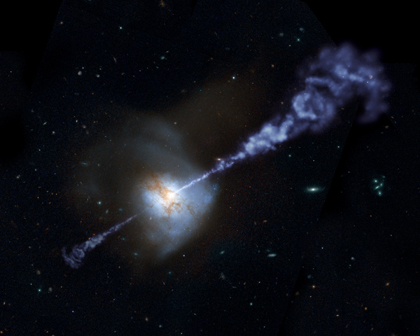Answering Two Popular Questions About That Hot Gas
Submitted by chandra on Thu, 2012-10-04 10:36
In writing a press release, a major goal is to present the truth, and nothing but the truth. However, it isn't practical to present the whole truth. For example, the paper associated with our press release last week was only six pages long, but contained 38 references to other papers, and each of these papers contain many more references. This is how research advances, building incrementally on previous work. Since we have limited space in a press release we cannot present the whole truth and we only include the information that we think is crucial for explaining the result and its significance.









